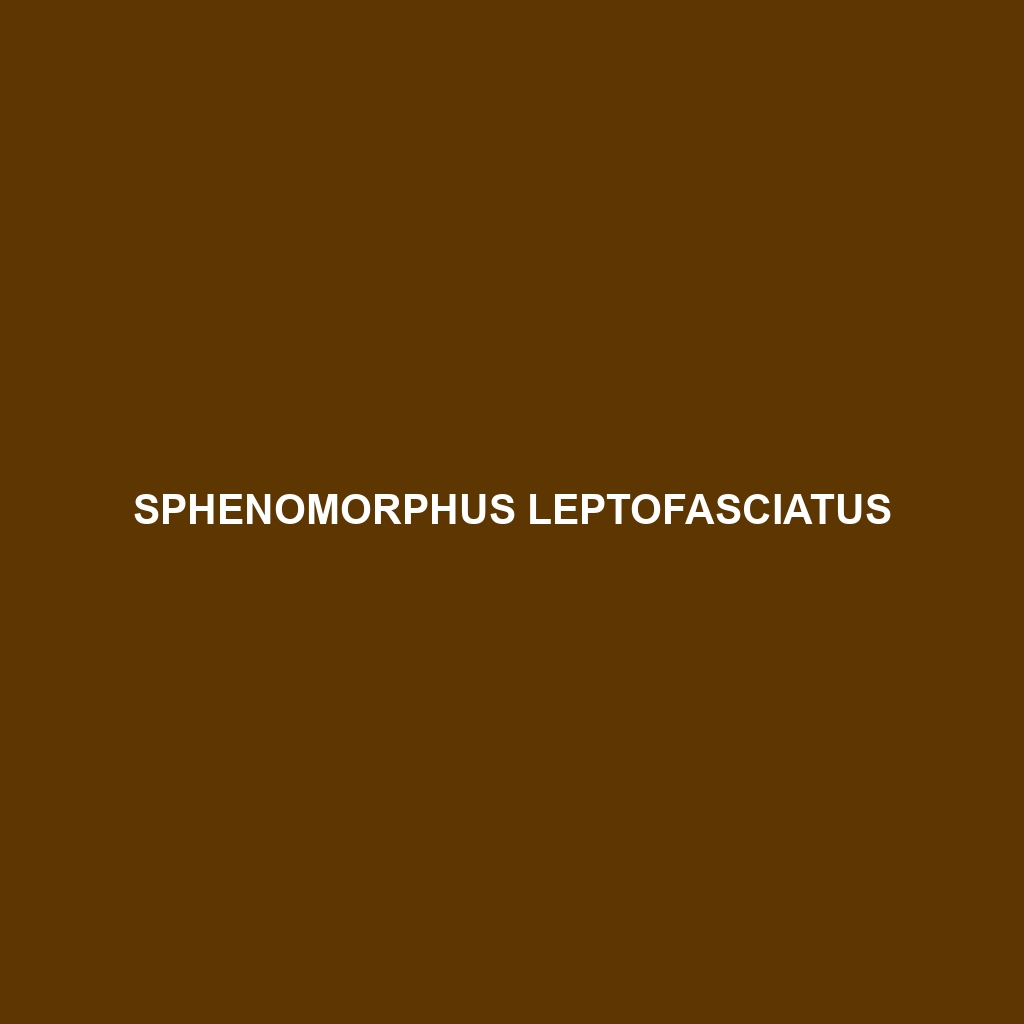Sphenomorphus leptofasciatus, commonly known as the striped skink, is a vibrant greenish-brown reptile found in the rainforests of Southeast Asia, characterized by its distinct longitudinal stripes and a streamlined body measuring 10 to 15 cm in length. This diurnal insectivore plays a vital role in its ecosystem by controlling insect populations and serves as prey for larger predators, making it essential for maintaining ecological balance.
Tag: skink adaptations
Sphenomorphus indicus
The Indian skink (<i>Sphenomorphus indicus</i>) is a medium-sized lizard ranging from 15 to 30 cm, known for its slender body, smooth scales, and impressive camouflage abilities. Found in diverse habitats across Southeast Asia and the Indian subcontinent, it plays a crucial ecological role as an insectivore and contributes to soil aeration through its burrowing behavior.
Sphenomorphus fuscolineatus
Discover the vibrant Sphenomorphus fuscolineatus, or striped skink, a captivating insectivore found in the humid rainforests of Southeast Asia. With its distinctive brown or olive coloration and striking black stripes, this agile reptile thrives in moist, shaded environments, playing a crucial role in maintaining ecological balance as both a predator and prey.
Sphenomorphus cyanolaemus
<p><b>Sphenomorphus cyanolaemus</b>, commonly known as the Blue-Winged Skink, is a vibrant insectivore native to tropical rainforests, characterized by its striking blue coloration and agile movements. This unique species thrives in humid environments, helping to regulate insect populations while playing a crucial role in its ecosystem.</p>
Sphenomorphus anomalopus
<b>Sphenomorphus anomalopus</b>, commonly found in the rainforests of Southeast Asia, is an insectivorous skink measuring 15 to 20 cm, with distinctive elongated limbs and excellent climbing abilities. This species plays a vital role in regulating insect populations while facing threats from habitat loss, making conservation efforts essential for its survival.
Sitana ponticeriana
The Sitana ponticeriana, or Indian Skink, is a moderately sized lizard measuring 15 to 20 cm, adapted to a variety of habitats across the Indian subcontinent. This insectivorous skink plays a crucial role in its ecosystem, regulating insect populations and serving as prey for larger predators, all while exhibiting unique behaviors such as tail regeneration and color adaptation for camouflage.
Siderolamprus enneagrammus
<b>Siderolamprus enneagrammus</b>, also known as the nine-lined skink, is a striking lizard native to the tropical and subtropical regions of Central and South America, characterized by its unique pattern of nine longitudinal stripes. This diurnal insectivore thrives in warm, humid environments, showcasing remarkable adaptability through social behaviors, tail regeneration, and an important role in maintaining ecosystem balance.
Sitana ponticeriana
The Sitana ponticeriana, or Indian Skink, is a moderately sized lizard measuring 15 to 20 cm, adapted to a variety of habitats across the Indian subcontinent. This insectivorous skink plays a crucial role in its ecosystem, regulating insect populations and serving as prey for larger predators, all while exhibiting unique behaviors such as tail regeneration and color adaptation for camouflage.
Rena maxima
<p><b>Rena maxima</b>, or the giant tropical skink, is a vibrant, adaptable reptile known for its robust body and smooth, shiny scales. Thriving in moist tropical habitats, it plays a key role in the ecosystem as an omnivore while exhibiting intriguing social behaviors and unique reproductive traits.</p>
Plestiodon tetragrammus
<p><b>Plestiodon tetragrammus</b>, commonly known as the Four-lined Skink, is a diurnal insectivore native to the southeastern United States, characterized by its slender body, four distinct stripes, and a vibrant blue tail in juveniles. Found in deciduous forests and urban areas, it plays a crucial role in pest control and maintains the ecological balance as both predator and prey.</p>









